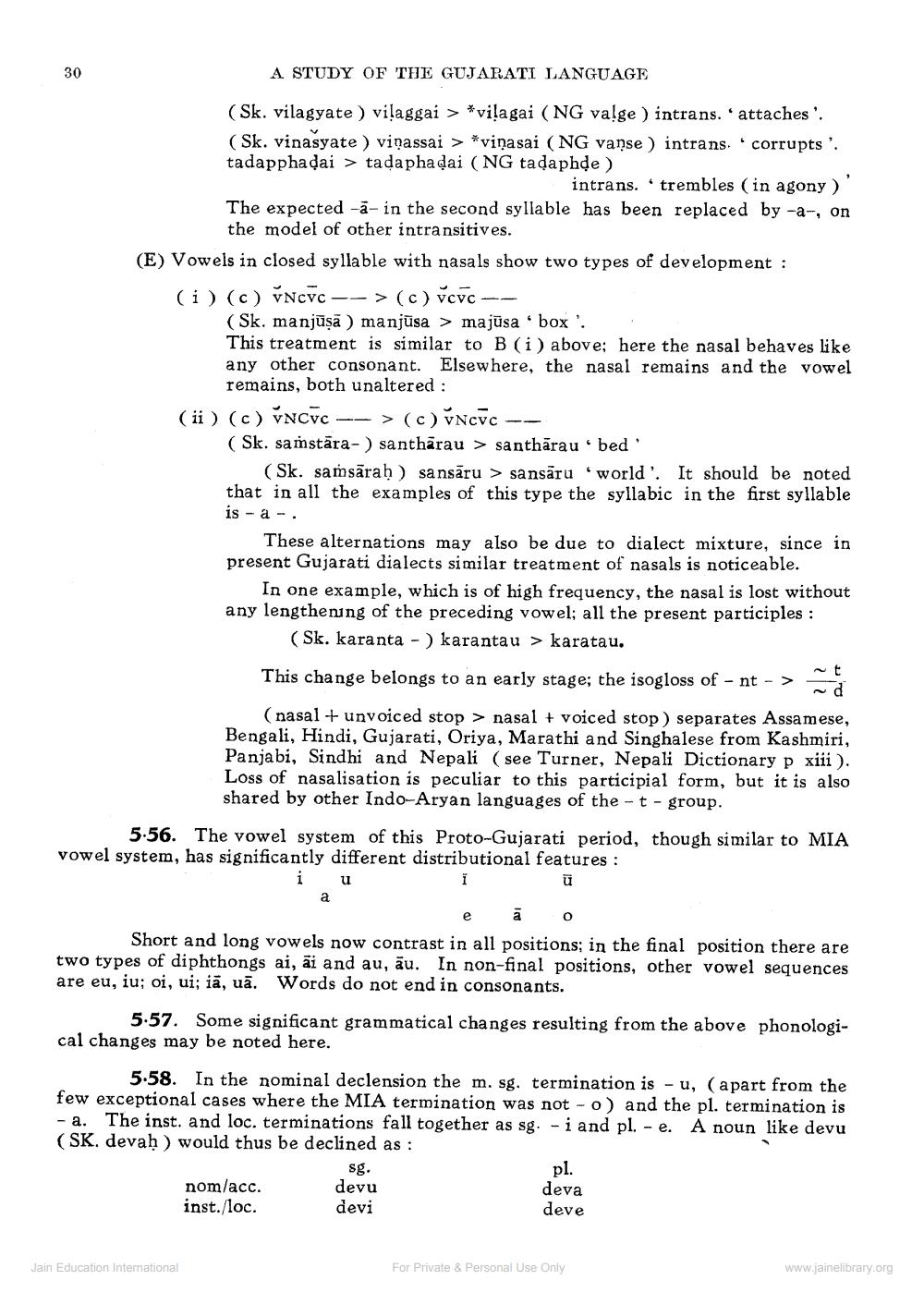________________
A STUDY OF THE GUJARATI LANGUAGE
(Sk. vilagyate ) vilaggai > *vilagai ( NG valge ) intrans. 'attaches'. (Sk. vinasyate ) viņassai > *viņasai ( NG vaņse ) intrans. corrupts'. tadapphadai > tadaphadai (NG tadaphủe )
intrans. trembles (in agony)' The expected -ā- in the second syllable has been replaced by -a-, on
the model of other intransitives. (E) Vowels in closed syllable with nasals show two types of development : (i) (c) incvc -->(c) vcvc ---
(Sk. manjūņā ) manjusa > majusa box !. This treatment is similar to B (i) above; here the nasal behaves like any other consonant. Elsewhere, the nasal remains and the vowel
remains, both unaltered : (ii) (C) VNCVC --> (C) VNCVC -- (Sk. saṁstāra-) santhārau > santhārau bed'
(Sk. samsāraḥ ) sansāru > sansāru "world'. It should be noted that in all the examples of this type the syllabic in the first syllable is - a - .
These alternations may also be due to dialect mixture, since in present Gujarati dialects similar treatment of nasals is noticeable.
In one example, which is of high frequency, the nasal is lost without any lengthening of the preceding vowel; all the present participles :
(Sk. karanta - ) karantau > karatau.
This change belongs to an early stage; the isogloss of - nt ->
(nasal + unvoiced stop > nasal + voiced stop ) separates Assamese, Bengali, Hindi, Gujarati, Oriya, Marathi and Singhalese from Kashmiri, Panjabi, Sindhi and Nepali (see Turner, Nepali Dictionary p xiii). Loss of nasalisation is peculiar to this participial form, but it is also shared by other Indo-Aryan languages of the-t-group.
5:56. The vowel system of this Proto-Gujarati period, though similar to MIA vowel system, has significantly different distributional features :
i u а
e ā Short and long vowels now contrast in all positions; in the final position there are two types of diphthongs ai, ai and au, au. In non-final positions, other vowel sequences are eu, iu; oi, ui; jā, uā. Words do not end in consonants.
5.57. Some significant grammatical changes resulting from the above phonological changes may be noted here.
5.58. In the nominal declension the m. sg. termination is - u, (apart from the few exceptional cases where the MIA termination was not-O) and the pl. termination is -a. The inst, and loc. terminations fall together as sg. -i and pl. - e. A noun like devu (SK, devah ) would thus be declined as :
pl. nom/acc. devu
deva inst./loc. devi
deve
sg.
Jain Education International
For Private & Personal Use Only
www.jainelibrary.org




